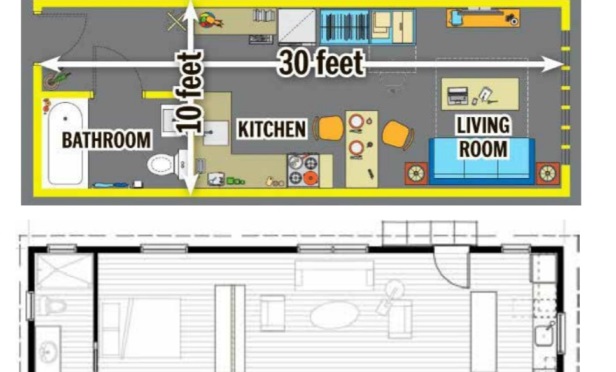 Numerous changes in renters' living habits are literally redrawing floorplans (credit: ULI).
Numerous changes in renters' living habits are literally redrawing floorplans (credit: ULI).
SEATTLE—As rentals grow in both popularity and pricing, floorplans have been slowly shrinking in size during the past decade. And, numerous changes in renters' living habits are literally redrawing floorplans.
The largest share of apartment dwellers, Millennials, prefer living in locations close to restaurants and entertainment rather than having large kitchens or living rooms for entertaining. But the rising interest in smaller living spaces is equally motivated by price, as the need to save on rent sparks demand for smaller units.
According to RentCafe's newest analysis of apartment sizes, the average rent in newly built US apartments has increased by 28% compared to 2008, while the sizes have gotten 5% smaller. That is, the average size of a new apartment completed in 2018 is 941 square feet, 52 square feet less or 5% smaller than the size of an apartment built 10 years ago, according to the analysis using Yardi Matrix data.
That said, the symbol of downtown living, studio apartments, have shrunken the most, by more than 10% as compared to 10 years ago, having been reduced from 573 square feet in 2008 to 514 square feet this year. The average US studio apartment has a square footage of 472 square feet and the size of a one-bedroom apartment is 714 square feet, while a two-bedroom apartment has an average living space of 1,006 square feet.
Contrary to the growing interest in smaller units, studio apartments continue to represent a lesser piece of the rental market, only 5% of all US apartments. One-bedroom rental units make up the largest chunk of the national apartment stock (43%) and those floorplans have decreased by 4% during the last decade, while two-bedroom apartments have recorded the least change in size, down by only 0.5% on average.
The average size of apartments regardless of year built is 882 square feet, with the largest apartments in the Southeast boasting 975 square feet of living space and the smallest in Seattle, with an average size of 711 square feet. New York City and Chicago have the second smallest rentals at 733 square feet, while Tallahassee, FL offers the most spacious US rentals at 1,038 square feet on average.
“Over the last decade, the Emerald City saw a mere 4% increase in the size of new apartments delivered,” Adrian Rosenberg, communications specialist, tells GlobeSt.com. “Meanwhile, their prices went through the roof due to a whopping 74% increase, the second highest growth rate after Denver. The most popular unit type in Seattle: one-bedroom apartments here measure 676 square feet, while studios and two-bedroom apartments have an average size of 461 square feet and 956 square feet respectively.''
© 2025 ALM Global, LLC, All Rights Reserved. Request academic re-use from www.copyright.com. All other uses, submit a request to [email protected]. For more information visit Asset & Logo Licensing.








